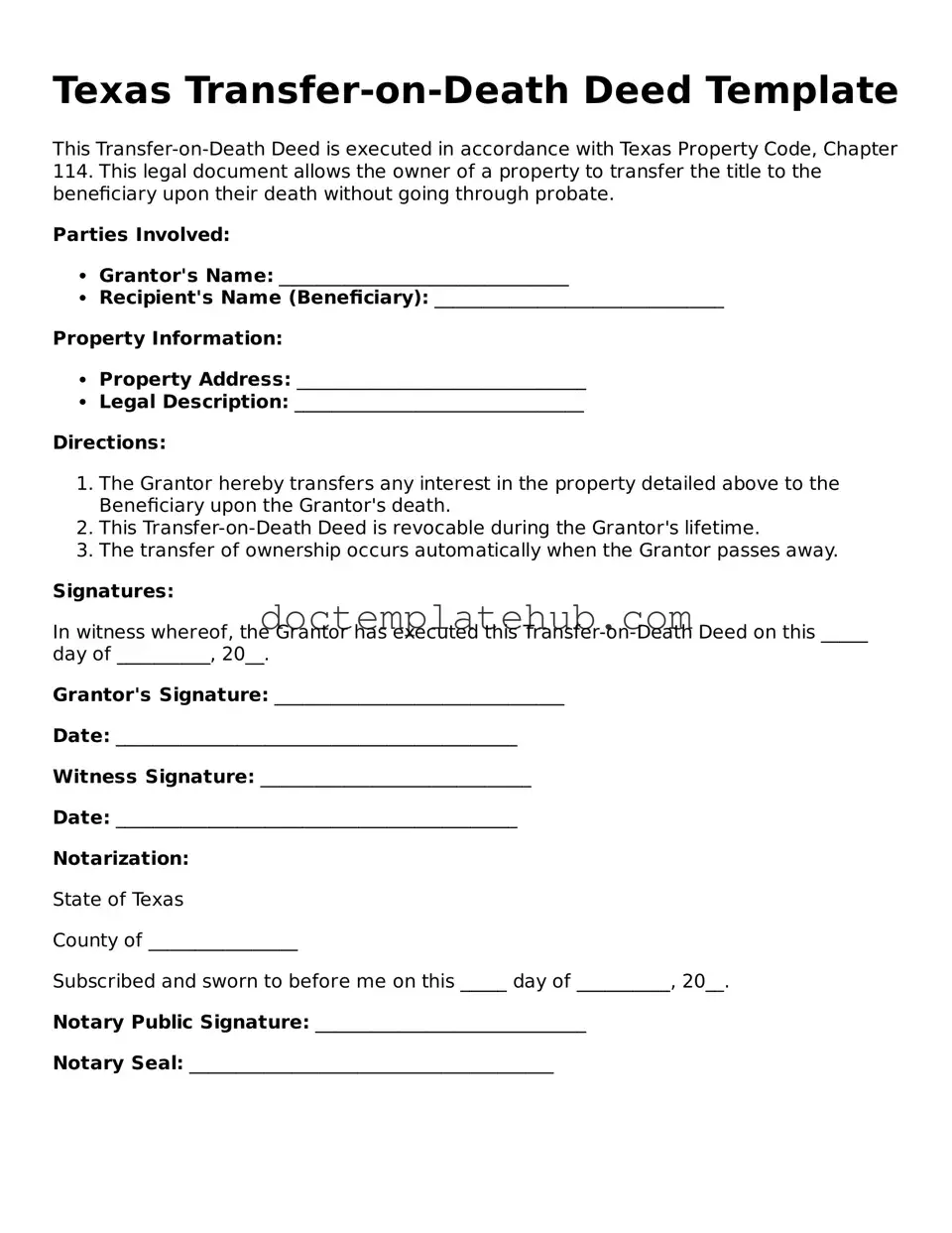What is a Transfer-on-Death Deed in Texas?
A Transfer-on-Death Deed (TODD) is a legal document that allows a property owner to designate a beneficiary who will receive the property upon the owner's death. This deed bypasses probate, allowing for a smoother transition of property ownership without the need for court intervention.
Who can create a Transfer-on-Death Deed?
Any individual who owns real property in Texas can create a Transfer-on-Death Deed. The property owner must be of sound mind and at least 18 years old. It is essential that the owner properly executes the deed according to Texas law for it to be valid.
How do I complete a Transfer-on-Death Deed?
To complete a Transfer-on-Death Deed, you must provide specific information including the legal description of the property, the name of the beneficiary, and your signature. It is advisable to have the deed notarized and recorded in the county where the property is located to ensure it is legally recognized.
Can I change or revoke a Transfer-on-Death Deed?
Yes, you can change or revoke a Transfer-on-Death Deed at any time during your lifetime. To do this, you must create a new deed that explicitly states the changes or file a revocation form with the county clerk's office where the original deed was recorded.
What happens if the beneficiary predeceases me?
If the designated beneficiary dies before you, the property will not automatically transfer to that individual. Instead, the property will become part of your estate and will be distributed according to your will or, if there is no will, according to Texas intestacy laws.
Is a Transfer-on-Death Deed the same as a will?
No, a Transfer-on-Death Deed is not the same as a will. While both documents deal with the distribution of property after death, a TODD specifically transfers real property directly to a beneficiary without going through probate. A will, on the other hand, typically requires probate proceedings to validate and execute the distribution of assets.
